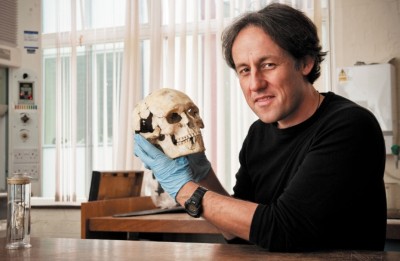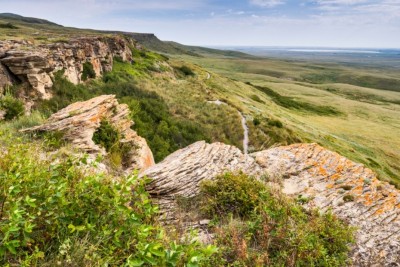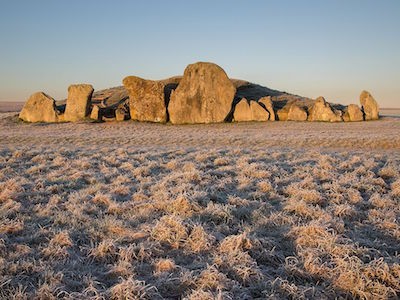Radiocarbon dating - a key tool used for determining the age of prehistoric samples - is about to get a major update. For the first time in seven years, the technique is due to be recalibrated using a slew of new data from around the world. The result could have implications for the estimated ages of many finds - such as Siberia's oldest modern human fossils, which according to the latest calibrations are 1,000 years younger than previously thought.
The work combines thousands of data points from tree rings, lake and ocean sediments, corals and stalagmites, among other features, and extends the time frame for radiocarbon dating back to 55,000 years ago - 5,000 years further than the last calibration update in 2013.
Archaeologists are downright giddy. "Maybe I've been in lockdown too long," tweeted Nicholas Sutton, an archaeologist at the University of Otago in New Zealand, "but ... I'm really excited about it!"

Although the recalibration mostly results in subtle changes, even tiny tweaks can make a huge difference for archaeologists and paleo-ecologists aiming to pin events to a small window of time. A new calibration curve "is of key importance" for understanding prehistory, says Tom Higham, archaeological chronologist and director of the Oxford Radiocarbon Accelerator Unit, UK.
The basis of radiocarbon dating is simple: all living things absorb carbon from the atmosphere and food sources around them, including a certain amount of natural, radioactive carbon-14. When the plant or animal dies, they stop absorbing, but the radioactive carbon that they've accumulated continues to decay. Measuring the amount left over gives an estimate as to how long something has been dead.
But this basic calculation assumes that the amount of carbon-14 in the environment has been constant in time and space - which it hasn't. In recent decades, the burning of fossil fuel and tests of nuclear bombs have radically altered the amount of carbon-14 in the air, and there are non-anthropogenic wobbles going much further back. During planetary magnetic-field reversals, for example, more solar radiation enters the atmosphere, producing more carbon-14. The oceans also suck up carbon - a little more so in the Southern Hemisphere, where there is more ocean - and circulate it for centuries, further complicating things.
As a result, conversion tables are needed that match up calendar dates with radiocarbon dates in different regions. Scientists are releasing new curves for the Northern Hemisphere (IntCal20), Southern Hemisphere (SHCal20), and marine samples (MarineCal20). They will be published in the journal Radiocarbon in the next few months.
Since the 1960s, researchers have mainly done this recalibration with trees, counting annual rings to get calendar dates and matching those with measured radiocarbon dates. The oldest single tree for which this has been done, a bristlecone pine from California, was about 5,000 years old. By matching up the relative widths of rings from one tree to another, including from bogs and historic buildings, the tree record has now been pushed back to 13,910 years ago.

Since 1998 there have been four official IntCal calibrations, adding in data from laminated lake and marine sediments, cave stalagmites and corals (which can be both radiocarbon dated and independently assessed using techniques such as radioactive thorium/uranium dating). In 2018, some stalagmites in Hulu Cave in China provided a datable record stretching back 54,000 years.
IntCal20 is based on 12,904 data points, nearly double the size of 2013's data set. The results are far more satisfying, says Paula Reimer, who heads the IntCal working group and leads the radiocarbon-dating Chrono Centre at Queen's University Belfast, UK. For a known, brief magnetic field reversal 40,000 years ago, for example, the 2013 curve's carbon-14 peak was too low and too old by 500 years - an annoyance fixed by the new curve.
Higham says the recalibration is fundamental for understanding the chronology of hominins living 40,000 years ago. "I am really excited about calibrating our latest data using this curve," he says.
IntCal20 revises the date for a Homo sapiens jawbone found in Romania called Oase 1, potentially making it hundreds of years older than previously thought. Genetic analyses of Oase 1 have revealed that it had a Neanderthal ancestor just four to six generations back, says Higham, so the older the Oase 1 date, the further back Neanderthals were living in Europe. Meanwhile, the oldest H. sapiens fossil found in Eurasia - Ust'-Ishim, unearthed in Siberia - is almost 1,000 years younger according to the new conversion curves. "It changes the earliest date we can place on modern humans in central Siberia," says Higham. He cautions, however, that there are more sources of error in such measurements than just radiocarbon calibration: "Contamination is the biggest influence for dating really old bones like these."

Others will use the recalibration to assess environmental events. For example, researchers have been arguing for decades over the timing of the Minoan eruption at the Greek island of Santorini. Until now, radiocarbon results typically gave a best date in the low 1600s BC, about 100 years older than given by most archaeological assessments. IntCal20 improves the accuracy of dating but makes the debate more complicated: overall, it bumps the calendar dates for the radiocarbon result about 5-15 years younger, but - because the calibration curve wiggles around a lot - it also provides six potential time windows for the eruption, most likely in the low 1600s BC, but maybe in the high 1500s BC.
So the two groups still disagree, says Reimer, but less so, and with more complications. "Some of them are still arguing," says Reimer. "There's no hard answer."
Nevertheless, anyone looking at practically anything relating to human history from the past 50,000 years will be enthusiastic about the new calibration, says Higham: "This is a particularly exciting time to be working on the past."